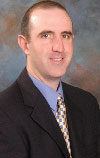Getting cows bred and a live calf on the ground are critical factors in the success of cow-calf operations. Calving ease is important in both situations and is affected by several things including size and age of the cow, birthweight of the calf and other factors. Calving problems are most common in heifers but sometimes occur in cows. Difficult calving in heifers or cows can lead to extended times after calving for females to come back in heat and get bred.
Calving problems can be almost eliminated through genetic selection, proper heifer development and being aware of factors that can increase birthweight. Most major beef breeds have Calving Ease Direct (CE or CED), Calving Ease Maternal (CEM or MCE) and Birthweight (BW) expected progeny differences (EPDs) that can be used when making selection decisions. Calving ease EPDs are calculated from calving ease scores from heifers and birthweight. Calving ease direct EPDs should be looked at when selecting bulls to breed to heifers. Calving ease maternal EPDs should be looked at when selecting sires to produce replacement heifers.

Proper heifer development is critical to reduce calving problems and set heifers up to breed back in a timely manner and raise a good calf. Heifers should be developed to reach at least 85% of their mature bodyweight at calving. For example, if heifers are going to mature into 1,300-pound cows, they should weigh at least 1,105 pounds at calving. Heifers should also be in a body condition score of 6 or greater at calving. Underfeeding heifers can increase calving problems because birthweights are often not changed and now the heifers are less developed.
Environmental temperature during late gestation can also impact birthweight. Research would suggest that calves born in the fall will be about 5 pounds lighter at birth than calves with similar genetics born in the spring. Additionally, calves born in the southern U.S. (warmer climate) will be lighter at birth than calves with similar genetics born in the northern U.S. (colder climate).
Consumption of an extremely high-protein and high-energy diet during the last three months of gestation has increased birthweight in some studies. However, this is rarely a problem. Grazing most forages or feeding hay and supplements is not a concern. Full-time grazing of ryegrass, oats, wheat and other cool-season forages during late gestation could be an issue. During late gestation, it is best to limit graze these forages for about two hours a day.








